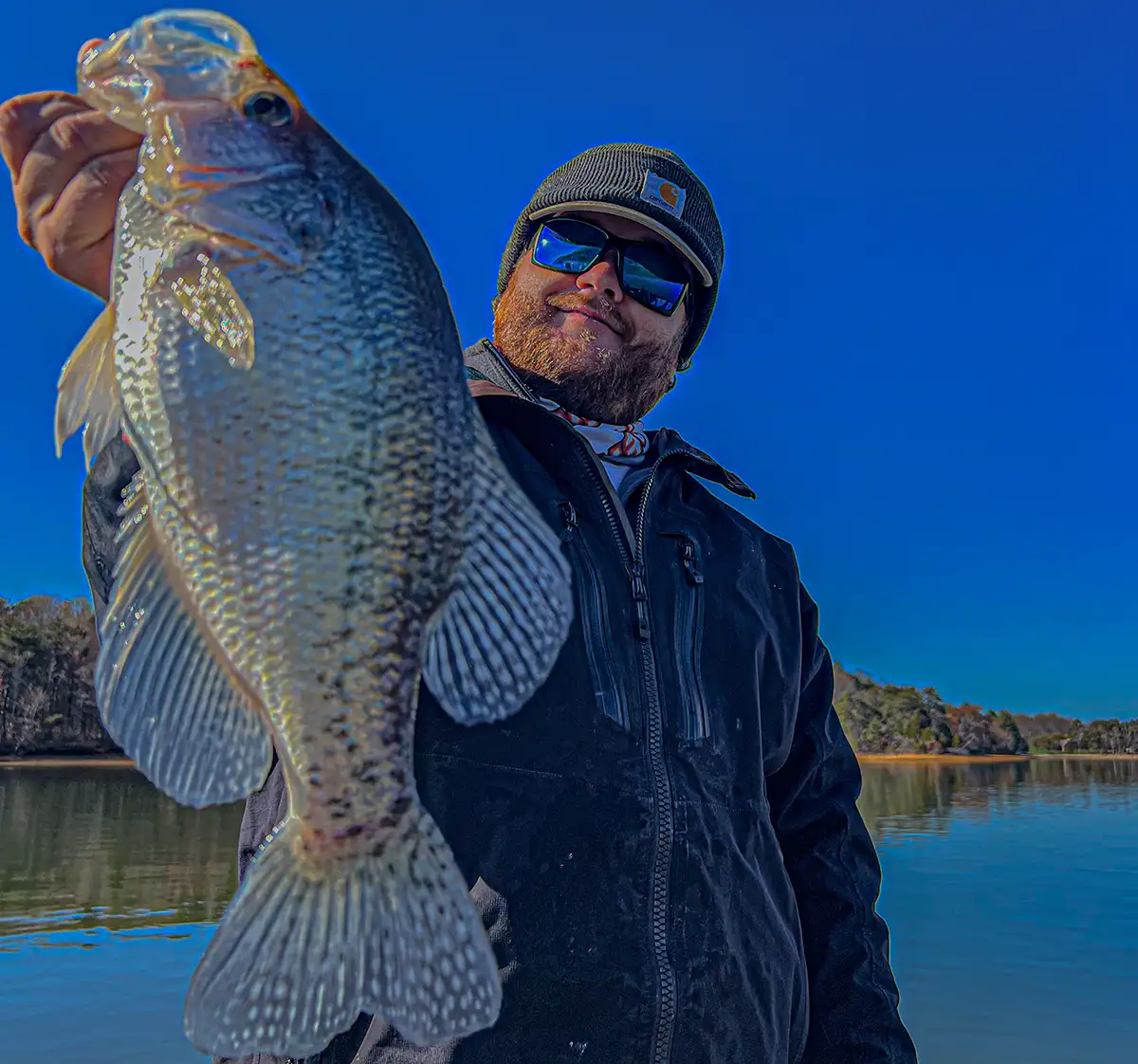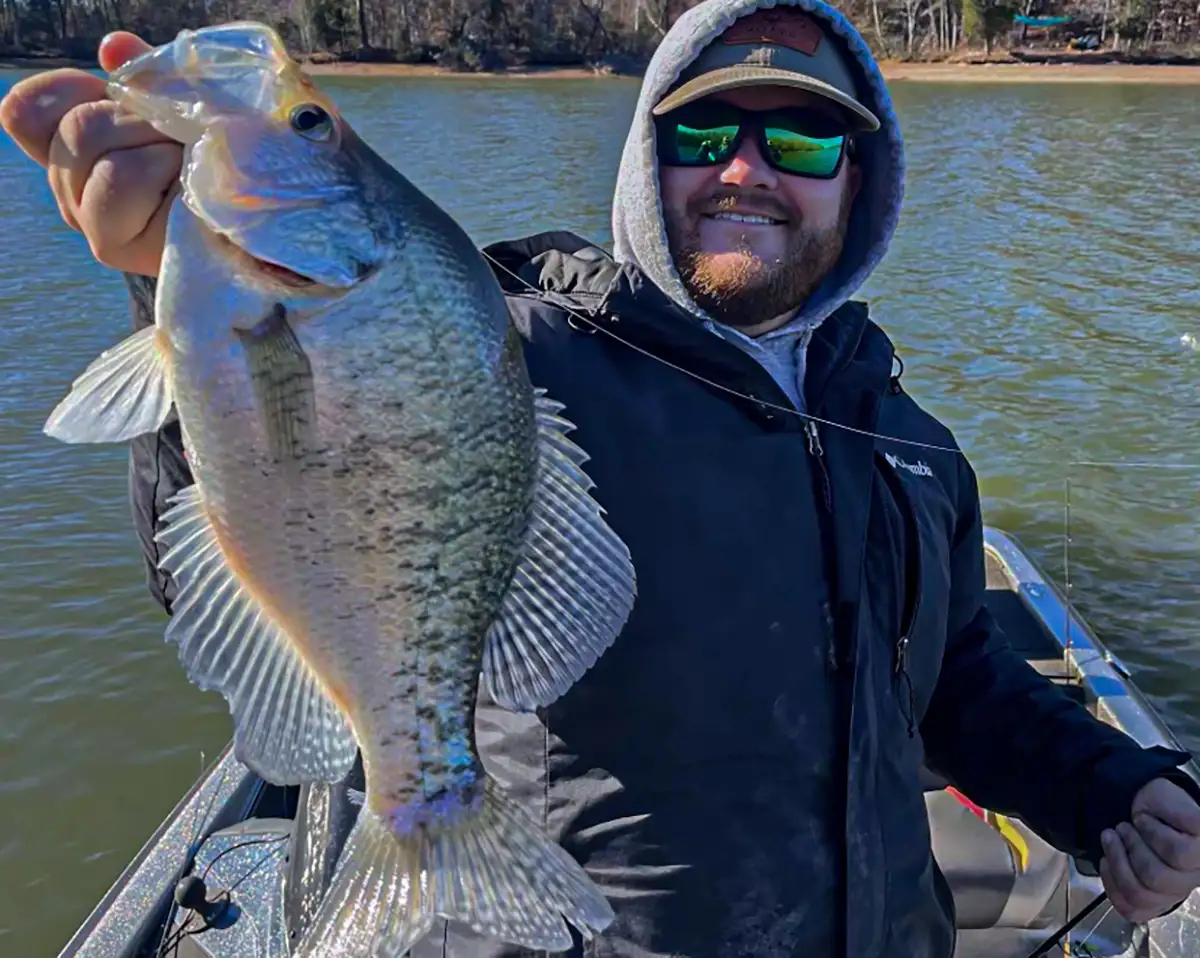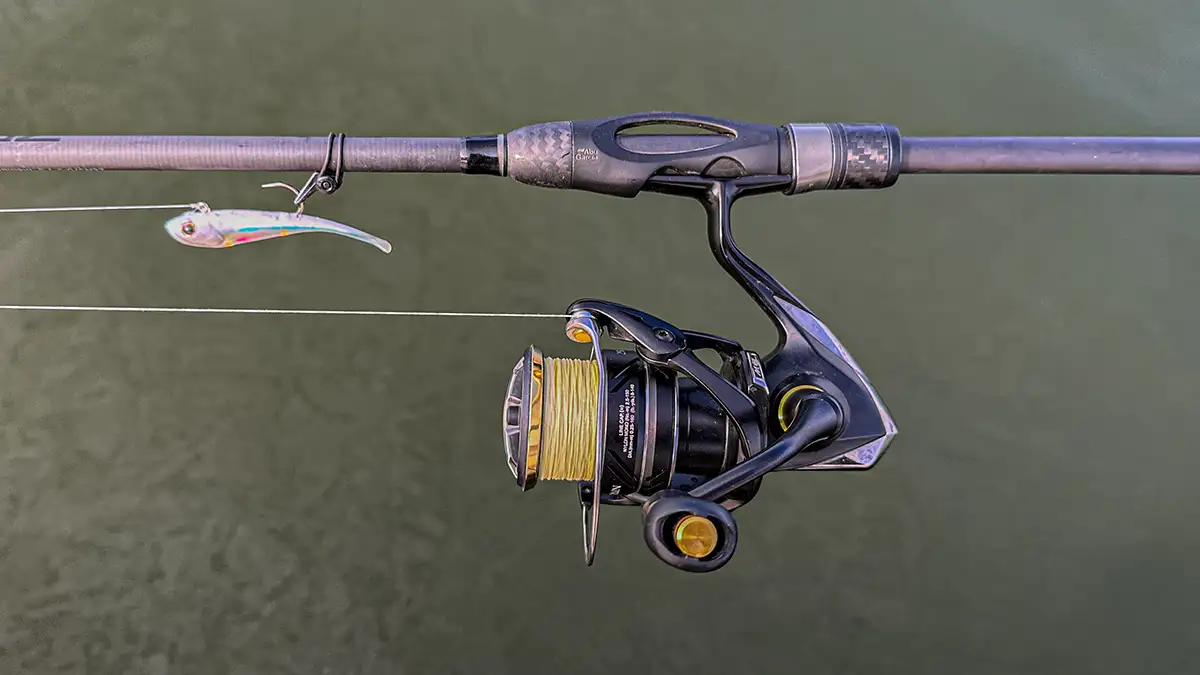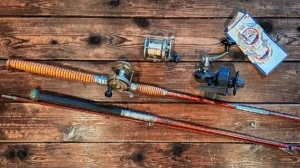I’ve been a die hard bass fisherman for as long as I can remember. I have dedicated a ridiculous amount of time to chasing and learning about these fish, without paying much attention to the other species that inhabit these waters. Over the holidays, I had the opportunity to go crappie fishing with a long time friend and Bassmaster Elite Series Rookie Robert Gee. Along with being a seasoned tournament bass fisherman, Robert has been crappie fishing for years. I had the opportunity to share the boat with him for a few hours during one of these excursions, and I wanted to share some of the lessons I walked away with.
FORWARD FACING SONAR BENEFITS
Our trip consisted of using forward facing sonar to target groups of crappie using a variety of different crappie jigs. One of the first things I noticed fishing with Robert was how accurate he was at putting the lure right on the fishes head. This is a skill that takes a lot of practice, especially with tiny crappie jigs. Robert stated this pastime helped him immensely in becoming proficient with forward facing sonar, and he’s confident it played a roll in his Elite Series qualification.
When targeting panfish such as crappie or bluegill, it is often a more target rich environment compared to your average day of bass fishing. This allows you more opportunity to work on your casting accuracy when using forward facing sonar. With the progression of technology and the direction tournament fishing is headed, being proficient with this equipment is almost essential for success in this field. Practicing with these electronics on species such as crappie or bluegill is a great way to quickly get proficient with this technology.
LEARN ABOUT FISH BEHAVIOR
Not only does crappie fishing help with your casting accuracy, but it also teaches you fish behavior. I’ve used forward facing sonar for the last several years. Throughout this time I only paid attention to fish that I thought were bass. Targeting other species such as crappie gives you a well rounded understanding of what you’re looking at on forward facing sonar. This allows you to quickly distinguish between different species of fish on your electronics, which is a huge time saver when targeting a specific species.
It also teaches you how different species of fish position themselves in the water column. Throughout my time using forward facing sonar I’ve slowly been able to understand how bass look and act on my electronics. Bass often travel in groups and move at a high rate of speed when feeding. They keep a few feet of distance between each fish, leaving enough room to see each fish clearly on forward facing sonar.
Crappie on the other hand position themselves much differently. Crappie still suspend in the water column, however they hold much tighter together and travel at a slower rate of speed. Obviously these fish are much smaller than bass, giving you a smaller return on forward facing sonar. Crappie can be found in brush and open water, allowing you numerous ways to target them. Understanding how fish position themselves is crucial for deciphering what’s on your electronics, and I’m looking forward to applying this knowledge in my future bass fishing endeavors.
ITS JUST FUN
Crappie fishing undoubtably teaches you a ton about fish behavior, but it’s also a relaxing way to spend an afternoon. Bass fishing, tournament fishing especially, can quickly turn into a stressful task if you let it. Crappie fishing is a great way to unwind and get back to the roots of why you love to fish. Not only is this activity relaxing, but it requires minimal experience once you’ve located some fish. This can be a great way to get friends and family involved in fishing, especially once you find a hungry school.
Not only did me and Robert catch a ton of crappie that day, but we even got my girlfriend on a few quality fish. This makes a great opportunity for taking out friends who want to catch some fish, but don’t necessarily have the patience for bass fishing. Crappie often travel in large groups, providing you with a great opportunity to catch a ton of fish in a short amount of time. Not only are crappie fun to catch, but they taste great too.
THEY TASTE GOOD
Crappie are widely regarded as the best tasting freshwater fish, and they make for a fantastic fish fry. Catching a limit of crappie and cooking them up with close friends and family is an absolute blast, and a great way to spend quality time with loved ones. Not only does crappie taste delicious, but its extremely cost effective. Targeting these fish from the bank can be fairly simple, and it doesn’t require much gear.
Simply bring a rod, reel and a little crappie jig and that’s all you need to catch dinner. Popular locations include bridges, laydowns and rip-rap banks. Letting your crappie jig suspend around bridge pylons or brush is a productive way to catch some crappie from the bank. Casting a small grub such as the Z-Man Micro Goat and slowly reeling it down the bank is another great way to catch quality crappie from shore. Be sure to check your local keeper limit if you plan on taking any crappie home for dinner.
YOU CAN USE THE SAME EQUIPMENT
Another great thing about crappie fishing is it doesn’t require any specialized gear. If you love to bass fish like me, I’m sure you have a couple spinning rods laying around the house. Pair this with some light line and a cheap jig and you’re ready to go. This allows you to quickly transition from bass fishing to crappie fishing without any major investment in equipment or tackle.
For this specific outing I transformed my ned rig setup into a crappie rod, and I was extremely impressed with its performance. This setup consisted of a 6-foot 10-inch medium-light action Abu Garcia Zenon Spinning Rod paired with a Shimano Sustain FJ 2500 Spinning Reel. For line we were using 10-pound high-viz Power Pro Braid to an 8-pound Berkley Trilene Leader. For a jig we used a traditional 3/16-ounce jig head paired with a Yamamoto Shad Shaped Worm.
This trip was not only a great time with close friends, but it taught me a ton about how fish look and act under the water. While I’ll always be a die hard bass fisherman at heart, I have a new found love for targeting these tasty little fish. If your a bass fisherman looking for new ways to enjoy your time on the water, I highly recommend giving crappie fishing a try.

















